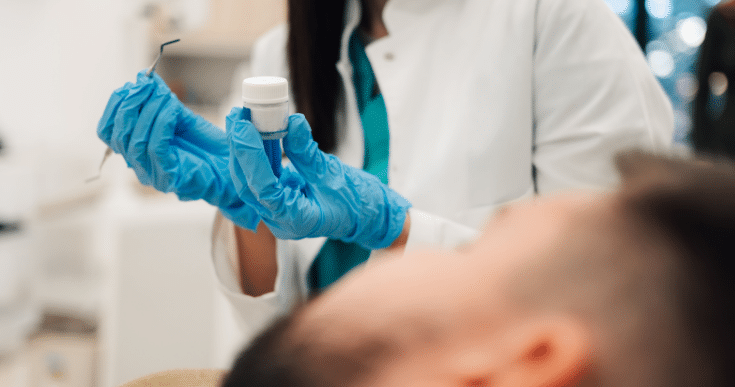
Temporary dental fillings, sometimes called provisional fillings, play a crucial role in the dental restoration process. These fillings are placed in your tooth after a cavity is cleaned or after a procedure to prepare your tooth for a permanent crown or bridge. According to the American Dental Association, millions of temporary fillings are placed in the United States every year.
Understanding Temporary Dental Fillings
Temporary fillings are typically made from a soft, resin-based material like acrylic or composite. This allows for easier removal when it’s time to place the permanent restoration. While temporary fillings are designed to last for several weeks or months, they are not as strong or durable as permanent fillings.
There are two main reasons why a dentist would remove a temporary filling:
- Placement of a permanent filling: Once your permanent restoration is ready, the dentist will remove the temporary filling to make way for it. This process involves carefully removing the temporary material and ensuring the tooth is clean and prepared for the permanent filling.
- Temporary filling failure: Temporary fillings are not as strong as permanent fillings and can sometimes dislodge or break due to various factors, such as:
- Biting into hard or chewy foods
- Improper flossing technique that snags the filling
- Grinding or clenching teeth
If you experience any discomfort, sensitivity, or notice the filling is chipped or loose, contact your dentist immediately.
How Do I Remove Temporary Dental Fillings?
While it may be tempting to remove a loose or damaged temporary filling yourself, it’s crucial to resist the urge. Temporary fillings are designed to be removed by a dental professional using specialized tools and techniques. Here’s why attempting self-removal is a bad idea:
- Damage to the tooth: You might accidentally damage the underlying tooth structure while trying to pry out the filling. This could lead to further pain, sensitivity, and the need for more extensive dental procedures.
- Incomplete removal: Leaving behind residual temporary filling material can interfere with the proper placement of the permanent restoration.
- Infection risk: Improper tools or techniques during self-removal can introduce bacteria to the sensitive inner pulp of the tooth, potentially leading to an infection.
So, what should you do? If your temporary filling is loose, chipped, or causing discomfort, schedule an appointment with your dentist as soon as possible. They will safely remove the temporary filling, address any underlying issues, and place a new temporary filling or proceed with the permanent restoration placement, depending on the situation.
Home Remedies for Removing Temporary Dental Fillings
There are no safe or effective home remedies for removing temporary dental fillings. Remember, attempting self-removal can lead to serious complications. Instead, focus on managing any discomfort until your dental appointment by:
- Over-the-counter pain relievers: Medications like ibuprofen or acetaminophen can help alleviate pain or discomfort.
- Saltwater rinse: Mix a teaspoon of table salt in a warm glass of water and gently swish to soothe the area.
- Soft foods: Stick to a soft diet to minimize pressure on the sensitive tooth.
Tips for Taking Care of Your Teeth After Removing Temporary Fillings
Following a temporary filling removal, proper dental hygiene is essential to promote healing and prevent complications. Here are some tips:
- Practice gentle brushing and flossing: Brush twice a day using a soft-bristled toothbrush and floss gently around the treated tooth.
- Avoid abrasive foods: Steer clear of hard, chewy, or sticky foods that could irritate the sensitive area.
- Stick to a balanced diet: Consume plenty of fruits, vegetables, and calcium-rich foods to support healing.
Conclusion
Temporary dental fillings play a vital role in protecting your tooth’s health and functionality while a permanent restoration is being crafted. Remember, temporary fillings are not meant to last forever. If you experience any issues with your temporary filling, don’t attempt self-removal. Schedule an appointment with your dentist for a safe and proper removal and to discuss the next steps in your dental treatment plan.




